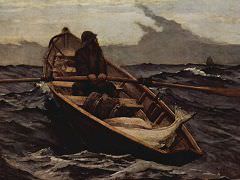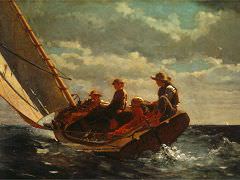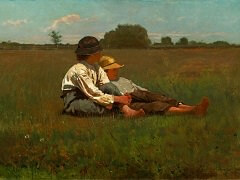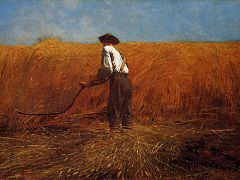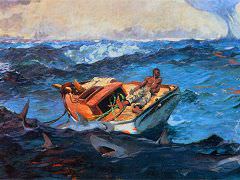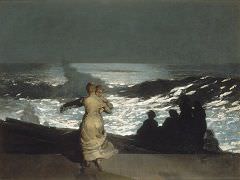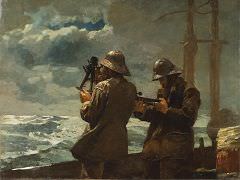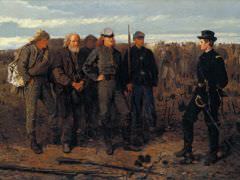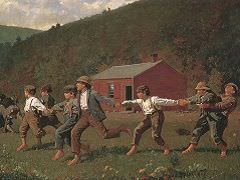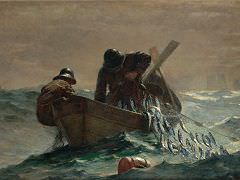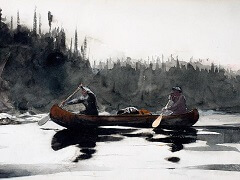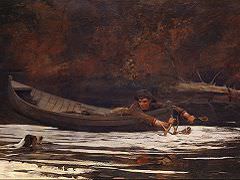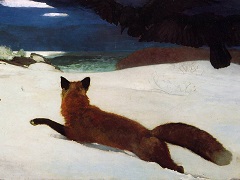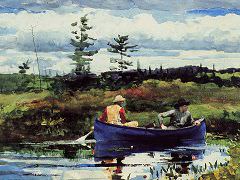West Point, Prout's Neck, 1905 by Winslow Homer
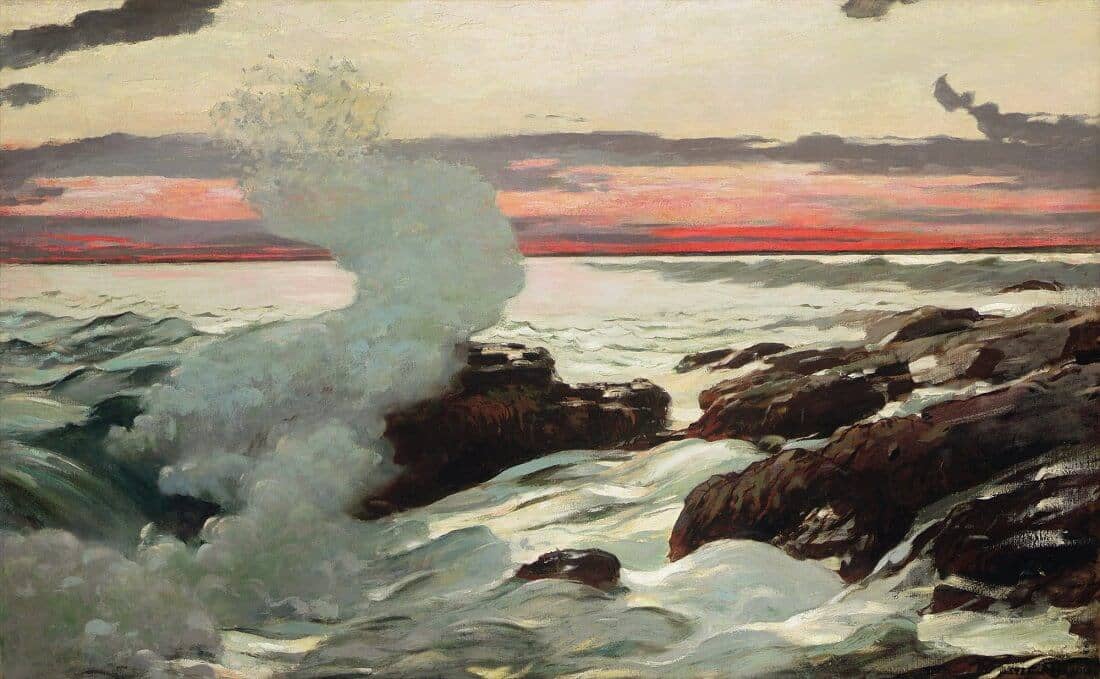
If the folk saying "Red sky at night, sailor's delight . . ." is true, then West Point, Prout's Neck is a picture about joy. Homer painted the scene near his Maine studio, looking to the southwest across Saco Bay to Old Orchard Beach. Not only the place but the effect was a real one. Homer wrote of it to his dealer: "The picture is painted fifteen minutes after sunset - not one minute before - as up to that minute the clouds over the sun would have their edges lighted a brilliant glow of color - but now the sun has got beyond their immediate range and they are in shadow. The light is from the sky in this picture. You can see that it took many days of careful observation to get this, (with a high sea and the tide just right)." He made this specificity of moment clear by the emphasis he gave to the spume that crests in the foreground.
Homer was able to laugh with others about some aspects of his work. He later wrote to his patron Thomas B. Clarke that his brother Charles had referred to the spume as a "pillar of salt" - or the biblical Lot's wife - lending credence to those scholars who see the breaking water as anthropomorphic.
Homer loved this picture. He asked a high price for it ($3,000 to the dealer, $2,400 to him - 20% more than his other comparably scaled seascapes, the same as he had asked for the much more complex composition Undertow) and wrote to Clarke: "I consider it the best that I have painted." The critics disagreed. When the picture was first seen in early 1901, several writers characterized the "blood-red glow in the sky" as "striking an aggressively raw note." By the time Clark acquired the painting in 1941, it had been out of public view and unstudied for four decades.

